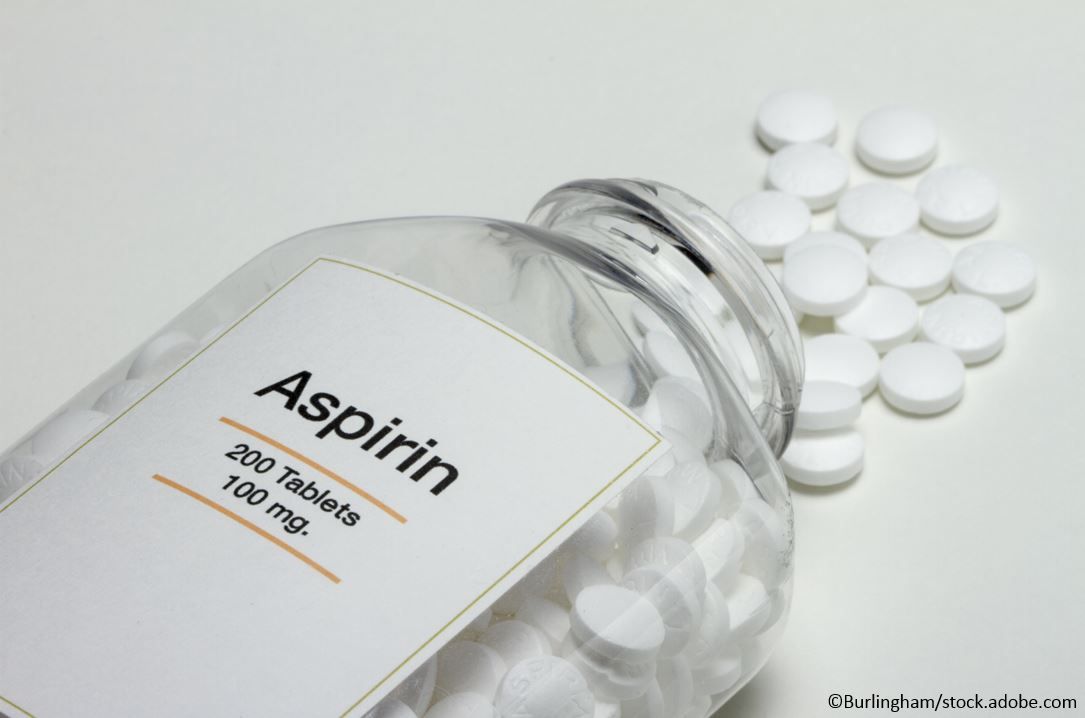- Clinical Technology
- Adult Immunization
- Hepatology
- Pediatric Immunization
- Screening
- Psychiatry
- Allergy
- Women's Health
- Cardiology
- Pediatrics
- Dermatology
- Endocrinology
- Pain Management
- Gastroenterology
- Infectious Disease
- Obesity Medicine
- Rheumatology
- Nephrology
- Neurology
- Pulmonology
Aspirin Underused for Secondary Prevention of CVD Worldwide, Especially in Lower-Income Countries
In an analysis of participant data from health surveys, less than half of eligible persons in the overall pooled sample were taking aspirin for secondary prevention of CVD.

Aspirin is underused for secondary cardiovascular disease (CVD) prevention worldwide, particularly in lower-income countries, according to a new study published in JAMA.
The cross-sectional analysis of data from nationally representative health surveys from 51 countries showed that less than half of eligible individuals in the overall pooled sample, including less than one-quarter in low- and lower-middle-income countries, were taking aspirin for secondary prevention of CVD.
“In the prevention of atherosclerotic CVD, aspirin is an effective and low-cost option for reducing CVD events and improving mortality among individuals with established CVD,” wrote senior author David Flood, MD, assistant professor, Division of Hospital Medicine, University of Michigan, and colleagues. “The current study aims to provide updated evidence on worldwide aspirin use among individuals with a history of CVD. Using nationally representative health surveys, we estimate aspirin use for secondary prevention of CVD and report its association with individual-level characteristics.”
Flood and colleagues examined pooled, individual participant data from nationally representative health surveys conducted between 2013 to 2020 in 51 low-, lower-middle-, upper-middle-, and high-income countries. The surveys contained information on self-reported history of CVD and aspirin use, according to the study.
FINDINGS
The overall pooled sample included 124 505 nonpregnant adults aged 40-69 years (median age, 52 years; 50.5% women), of whom 10 589 (8.1%; 95% CI, 7.6%-8.6%) had a self-reported history of CVD. Among them, 40.3% (95% CI, 37.6%-43.0%) used aspirin for secondary prevention, according to researchers.
Results showed that aspirin use for secondary prevention of CVD was lowest in lower-income countries and highest in higher-income countries.
The rate of aspirin use for secondary prevention of CVD in low-income countries was 16.6% (95% CI, 12.4%-21.9%), whereas it was 24.5% (95% CI, 20.8%-28.6%) in lower-middle-income countries, 51.1% (95% CI, 48.2%-54.0%) in upper-middle-income countries, and 65% (95% CI, 59.1%-70.4%) in high-income countries.
“Worldwide, aspirin is underused in secondary prevention, particularly in low-income countries,” concluded Flood and coauthors. “To meet the goal of reducing premature mortality from [noncommunicable diseases], including CVD, national health policies and health systems must develop, implement, and evaluate strategies to promote evidence-based use of aspirin.”
Reference: Yoo SGK, Chung GS, Bahendeka SK, et al. Aspirin for secondary prevention of cardiovascular disease in 51 low-, middle-, and high-income countries. JAMA. 2023;330:715-724.
